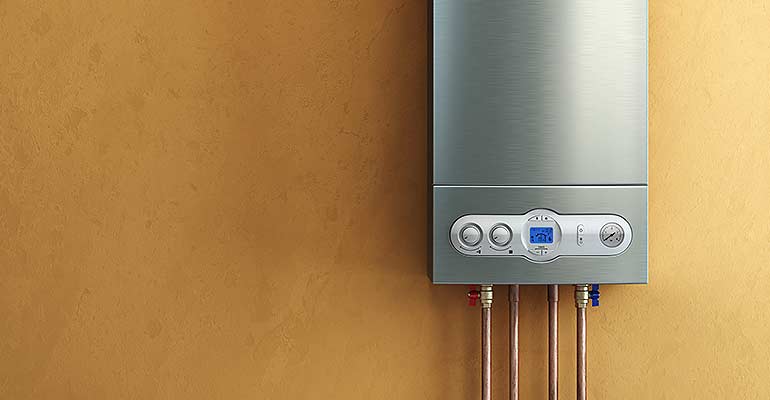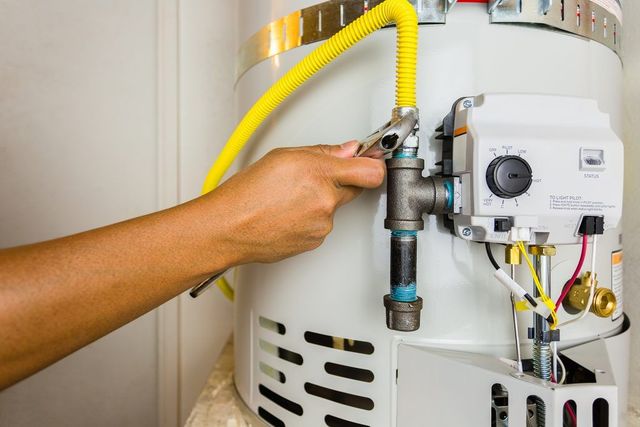What're your ideas concerning What Kind of Maintenance Do Water Heaters Need??

Warm water is crucial for everyday convenience, whether it's for a rejuvenating shower or cleaning meals. To guarantee your hot water system runs effectively and lasts much longer, routine upkeep is crucial. This short article supplies useful suggestions and understandings on just how to maintain your home's hot water system to stay clear of disruptions and costly repairs.
Intro
Maintaining your home's warm water system may seem difficult, but with a couple of simple steps, you can guarantee it operates smoothly for many years to come. This overview covers whatever from comprehending your hot water system to do it yourself upkeep suggestions and recognizing when to call specialist help.
Value of Maintaining Your Warm Water System
Regular maintenance not just prolongs the life-span of your warm water system but additionally ensures it runs efficiently. Ignoring upkeep can bring about decreased effectiveness, greater power expenses, and even premature failure of the system.
Indicators Your Warm Water System Requirements Maintenance
Understanding when your warm water system requires focus can protect against major problems. Watch out for indications such as irregular water temperature, unusual sounds from the heating unit, or rusty water.
Flushing the Hot Water Heater
Flushing your water heater removes debris build-up, boosting efficiency and lengthening its life.
Checking and Replacing Anode Rods
Anode rods stop corrosion inside the container. Checking and replacing them when broken is critical.
Facility Issues Calling For Expert Help
Instances include significant leaks, electrical problems, or if your hot water heater is consistently underperforming.
Regular Specialist Maintenance Conveniences
Professional upkeep can consist of extensive inspections, tune-ups, and guaranteeing compliance with safety criteria.
Inspecting and Adjusting Temperature Level Setups
Changing the temperature setups guarantees optimum efficiency and safety.
DIY Tips for Upkeep
You can execute several upkeep tasks on your own to keep your hot water system in leading condition.
Checking for Leaks
Frequently inspect pipes and links for leakages, as these can result in water damages and higher expenses.
Comprehending Your Hot Water System
Before diving right into upkeep tasks, it's handy to recognize the fundamental components of your hot water system. Usually, this consists of the water heater itself, pipes, anode rods, and temperature controls.
Month-to-month Upkeep Tasks
Regular month-to-month checks can assist capture minor concerns before they rise.
Evaluating Stress Alleviation Valves
Testing the stress safety valve guarantees it functions correctly and avoids too much pressure build-up.
Protecting Pipelines
Insulating hot water pipelines decreases warmth loss and can save power.
When to Call an Expert
While DIY upkeep is valuable, some problems require expert know-how.
Final thought
Normal upkeep of your home's warm water system is essential for effectiveness, durability, and expense financial savings. By complying with these ideas and understanding when to seek specialist aid, you can make certain a reliable supply of hot water without unforeseen interruptions.
Water Heater Maintenance: The Basics
Maintaining your water heater will ensure it operates efficiently and has a longer lifespan. Neglecting regular maintenance can lead to costly repairs and an even bigger chunk of your savings if you have to replace it sooner than necessary. But there’s good news: Most water heater maintenance tasks are relatively simple and easy for homeowners with basic DIY skills.
Flush the Water Heater
Over time, sediment and minerals can build up in the tank, reducing its efficiency and potentially causing damage. To flush the tank, turn off the power or gas supply, attach a hose to the drain valve near the bottom and open the valve to drain the water until it runs clear. Ideally, flush the tank annually.
Replace the Anode Rod
The anode rod is a sacrificial metal rod that helps prevent corrosion inside the tank. Inspect and replace it every three to five years or per the manufacturer's recommendation. To replace the anode rod, turn off the power or gas supply, drain a few gallons of water from the tank, unscrew the old rod and replace it with a new one. If the anode rod is significantly corroded or covered in calcium buildup, it's a sign the water heater may need to be replaced soon.
Tune-Up
A yearly tune-up can help identify potential issues and ensure your water heater operates at peak efficiency. This typically involves checking the thermostat, burner assembly (for gas heaters) and any other components specified by the manufacturer. During a tune-up, the technician may also clean the burner and adjust the pilot light (for gas heaters) or examine the heating elements (for electric heaters).
How to Maintain Your Water Heater
Insulate the tank. Insulating the tank can improve energy efficiency and reduce heat loss, saving you money on energy bills. You can purchase precut insulation blankets designed specifically for water heaters or use standard fiberglass insulation wrapped securely around the tank. Check the temperature. The recommended water temperature for most households is around 120 degrees Fahrenheit (49 degrees Celsius). Higher temperatures can increase energy costs and potentially cause scalding. Use a kitchen thermometer to check the temperature at the faucet nearest the water heater. Monitor water pressure. Excessive water pressure can strain the water heater and cause leaks or even tank failure. Install a pressure-reducing valve if necessary. The ideal water pressure range is between 60 and 70 PSI (pounds per square inch). Test the temperature and pressure (T&P) relief valve. The T&P relief valve is a safety feature that releases pressure if the tank gets too hot or the pressure builds up too high. Test it annually by lifting the lever and allowing a small amount of water to release. Replace the valve if it doesn't release water or reseal properly. Check for leaks. Regularly inspect the tank, pipes and fittings for leaks or corrosion. Deal with issues promptly to prevent further damage. Even a small leak can lead to significant water damage over time. Consider a tankless water heater. If your traditional tank-style water heater is nearing the end of its lifespan ( typically 10 years), consider replacing it with a tankless water heater. These units heat water on demand, reducing standby energy losses and potentially saving you money on your energy bills. Schedule professional maintenance. While homeowners can perform many water heater maintenance tasks, it's still a good idea to schedule professional maintenance every few years. A plumber or HVAC technician can thoroughly inspect the unit, identify potential issues and ensure it operates safely and efficiently. https://www.homeserve.com/en-us/blog/home-improvement/hot-water-heater-maintanence/

Do you appreciate reading up on Tips For Maintaining Your Hot Water Heater? Make a short review further down. We'd be pleased to know your views about this posting. We are looking forward that you come back again before long. You should set aside a second to share this blog if you enjoyed reading it. Thank you for taking the time to read it.
Book Inspection